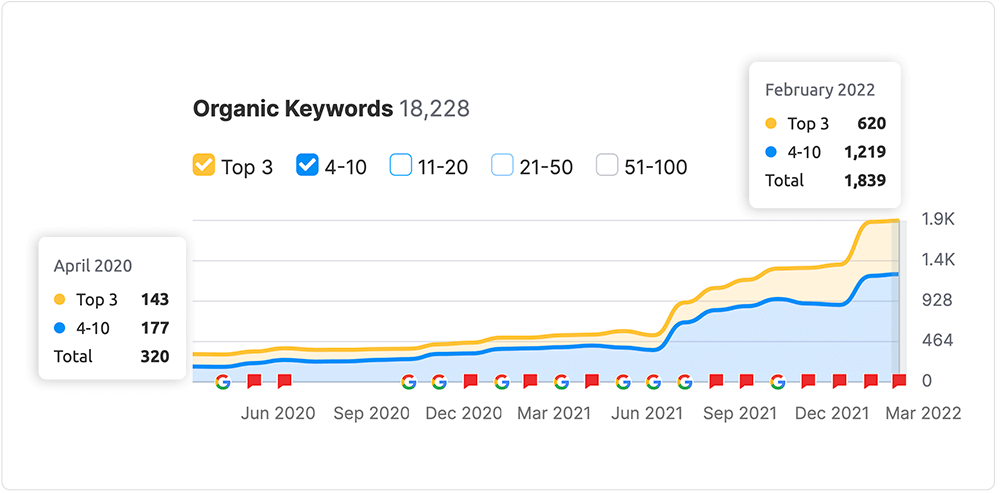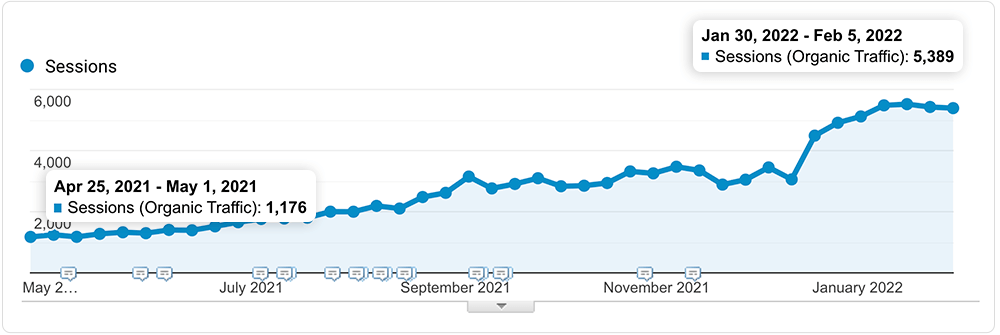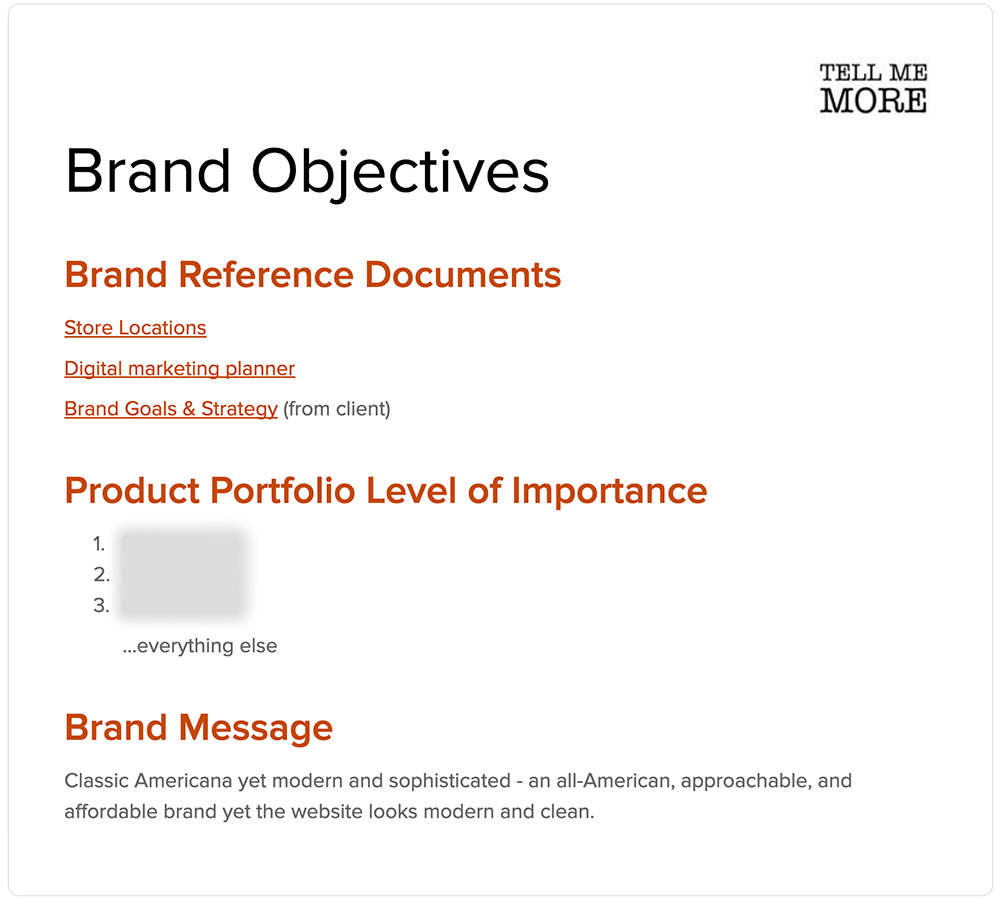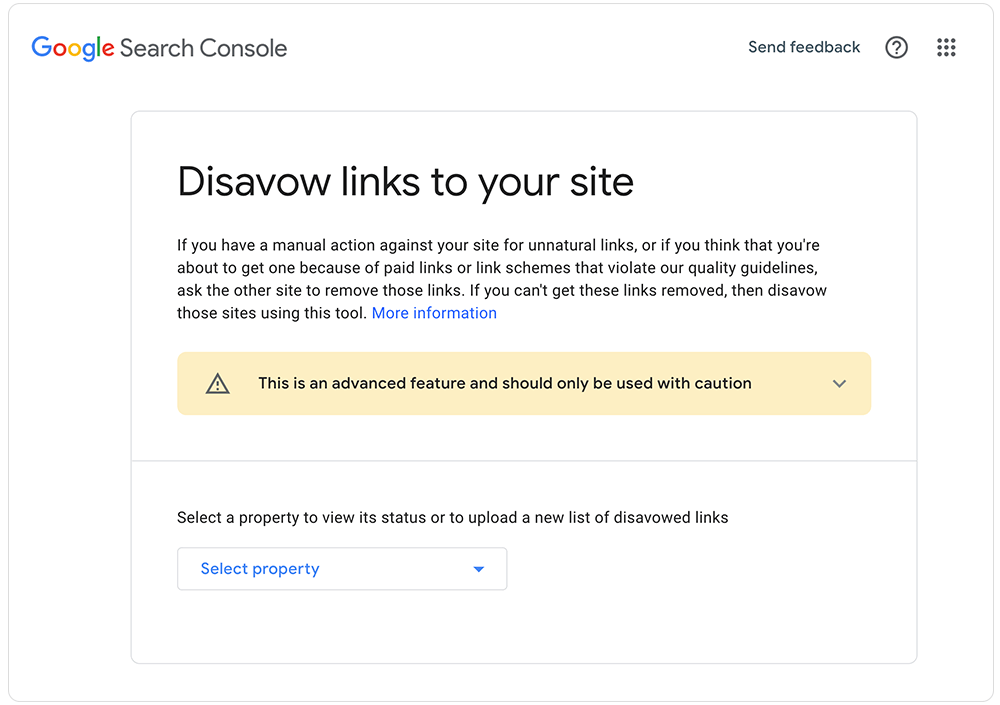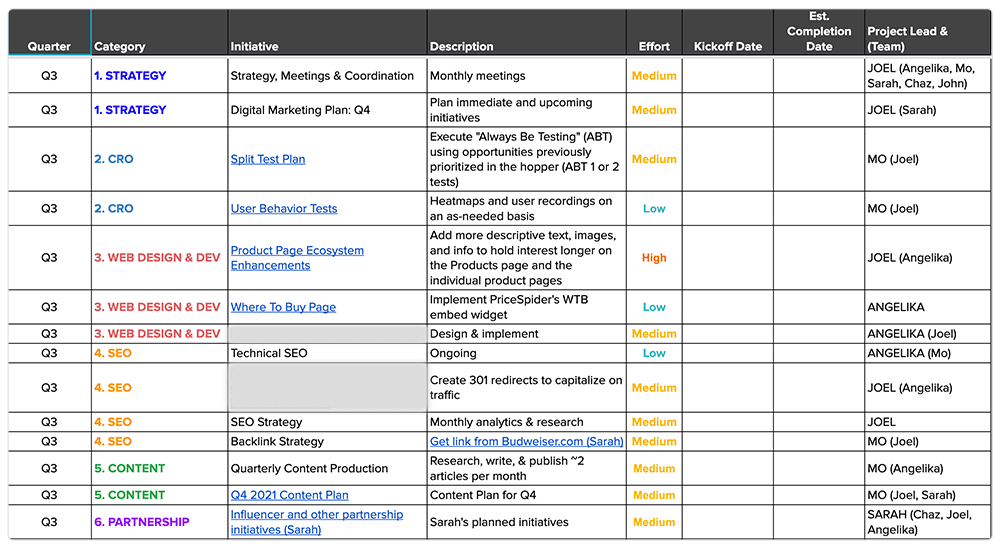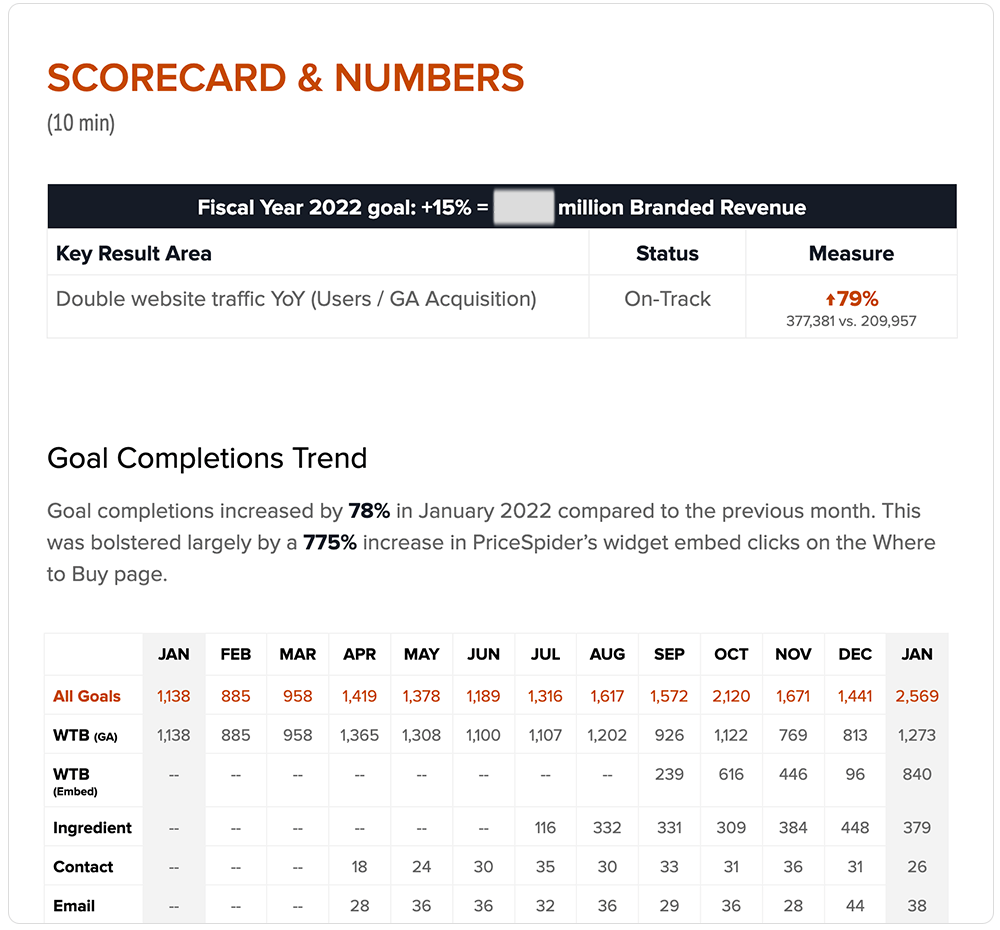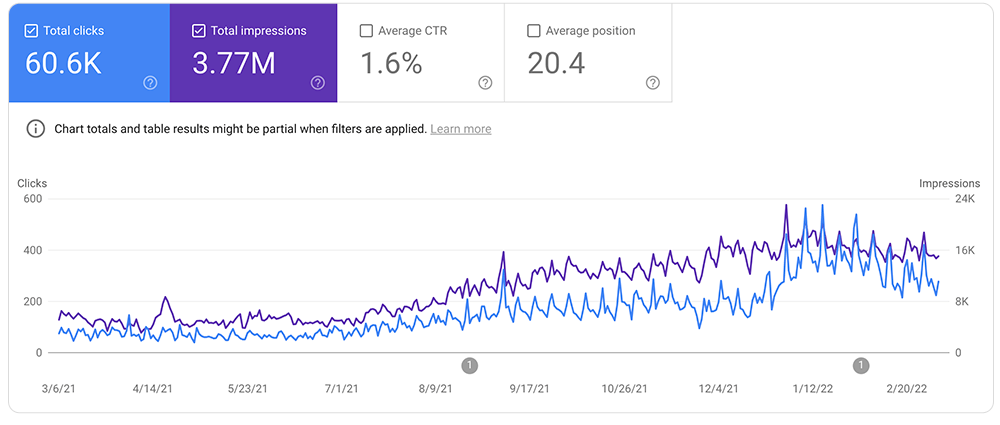This case study shows how TELL ME MORE® built 1,839 page one keyword rankings for a company in a natural foods niche.
Notice that 620 of those keywords appear in the first 3 results on the page.
That keyword growth resulted in 5x growth in organic traffic:
How were we able to achieve these results? Read on, and we’ll show you the specific strategy and steps that we took.
More Details on the Case Study
This company is a natural foods brand that’s owned by a major Fortune 500 food conglomerate in the United States. While the company itself is quite large, the specific team that works on this brand has just three people: Director of Marketing & Communications, a graphic designer, and an entry-level marketing person.
The objective of the digital marketing engagement and the website specifically was to grow brand awareness by improving organic search engine results for queries that appeal to the brand’s target demographic, as well as a desired new target audience.
Here’s the High-Level SEO Brand Strategy
Our main focus was improving the overall site structure, page speed, and user experience, as well as beating the competition with better-written, more-comprehensive, and higher quality content.
- Auditing the website
- Creating a step-by-step SEO plan
- Redesigning the look & feel to be current, on-brand, and mobile-first
- Rebuilding the website with a custom theme optimized for speed and user experience
- Crafting and executing a blog content plan
The project as a whole presented several major challenges that required the commitment and cooperation of the client’s small but mighty in-house marketing team, working alongside our own.
In SEO, the right small, incremental changes made over time create exponential results.
Focus on the Fundamentals
The fundamentals of SEO include making websites fast, user-friendly, and answering the specific questions searchers have on topics in a niche.
Unfortunately, this website had none of those things.
We had to fix:
- Poor overall website architecture
- Under-optimized site content
- Backlinks from irreputable and harmful websites
- Slow page speeds
- Outdated page design that detracted from the brand experience
…among other things. The client also wanted the ability to maintain the website themselves as fully as possible.
7 Steps to Massively Increasing Brand Awareness with Organic SEO
After diagnosing the overall situation and taking into account the client’s budget and goals, we put in place the following plan to right the ship:
- Understand the brand’s goals
- Research keyword topics and create content groupings
- Conduct competitor analysis
- Document and fix the website’s backlink profile
- Improve the user experience
- Define an onsite SEO and content creation plan
- Implement and track results on a scorecard
1. Understand the Brand’s Goals
The brand itself is a successful natural foods brand competing against well-funded, national brands on a regional level. By understanding the brand’s demographics, positioning, and messaging, we were able to create an overall plan that aligned with and augmented the brand’s proposition.
In order to capture all of this and create a framework for thinking, we created a basic brand objectives document to guide our efforts, choosing three main product categories as our focus.
2. Research Keyword Topics and Create Content Groupings
Next, we did some lightweight keyword research to understand the overall competitive landscape for the niche.
Because the client’s budget was limited—and they were somewhat skeptical as to how this would all work—we gathered up the fastest, most-obvious wins. We then built a quick plan to guide initial content and SEO efforts. This falls in line with TMM’s “test small” philosophy.
After several months of showing initial results, we created deep keyword buckets for each major product category. Our system automatically creates weekly Keyword Position Tracking Reports to show how our client is performing versus the most-important competitors in the niche.
3. Conduct Competitor Analysis
In addition to understanding the most-important content groupings, we audited top competitors in our niche. This includes:
- Brands that our client competes against
- Food articles and online magazines, and
- Any site receiving preferential search engine results for important queries, such as rich snippets
We then analyzed what they were doing to win in the search engines and came up with ways that we could improve upon their content.
SEO is a long game, requiring patience and diligent effort. That said, there are usually quick wins that can show you—or your boss—that a plan can really work.
4. Document the Website Backlink Profile
The search engines use deep algorithms that still heavily rely on backlinks for rankings. But they have become more sophisticated, in that some backlinks can actually hurt rather than help.
Thus, it’s important to understand which links are good, which are bad, and remove or “disavow” backlinks that come from spammy and low-authority websites.
5. Improve User Experience
There are five major elements of online user experience:
- Usefulness
- Functionality
- Credibility
- Design
- Outcome
All of these are really required for a website to be worth the investment and carry its weight.
A beautiful site that isn’t useful is annoying. A well-designed website that helps users achieve outcomes with credible information, but doesn’t help the site owner achieve the outcomes it’s after is a wasted investment. And so on.
In this case, we rebuilt the client’s entire website from scratch. Sometimes that’s impractical for budgetary reasons, and that’s OK. In SEO, the right small, incremental changes made over time create exponential results.
6. Define an Onsite SEO and Content Creation Plan
The core of SEO is execution over time, so getting the plan right up-front is paramount. Clients constantly rave about how organized and methodical TELL ME MORE is, and this is just one example of that.
7. Implement and Track Results on a Scorecard
While building a plan is critical, nothing happens without focused action over time. To hold ourselves and our client accountable, we held monthly deep-dive SEO meetings to discuss ideas, define new objectives, and track progress.
We also typically hold weekly 15-minute check-in calls using a “scrum” format, so that our clients have an opportunity to stay up-to-speed on our efforts and ask any questions.
The Results Speak for Themselves
SEO is a long game, requiring patience and diligent effort. That said, there are usually quick wins that can show you—or your boss—that a plan can really work.
Take a look at the below Google Search Console graph showing a massive increase in impressions and clicks—both of which are important from a brand-building perspective.
Now it’s your turn. Want to see how Tell Me More can improve your website ranking and results? Reach out and say hello! We’d love to get to know you.
I was nervous about getting our new site built, but TMM reassured me with each conversation, and they truly did an amazing job in making it a great experience.

